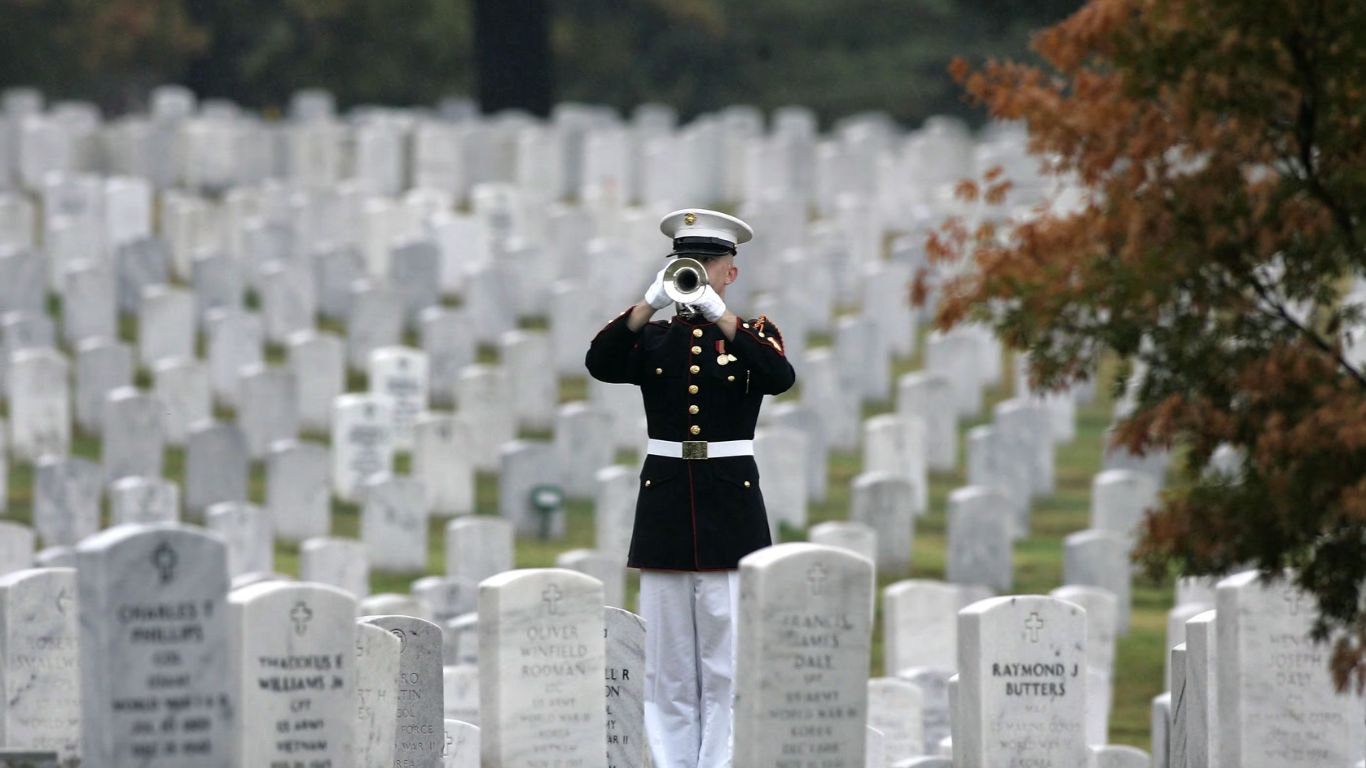Every year on November 11, the United States pauses to honor the dedication and sacrifices of its military veterans. Veterans Day serves not only as a time for solemn reflection but also for national unity, local celebration, and acts of appreciation. From bustling parades in major cities to quiet flag-raising ceremonies in small towns, Veterans Day events across the U.S. highlight the nation’s collective respect for those who served in uniform.
See How both community-level activities and nationwide observances contribute to honoring veterans. It offers insight into the purpose, structure, and emotional impact of these events, showing how Americans express appreciation beyond words.
Table of Contents
National-Level Celebrations: Honoring Service on a Grand Scale
Arlington National Cemetery – Veterans Day National Ceremony
Perhaps the most recognized Veterans Day event in the country is held at Arlington National Cemetery:
- Begins with a wreath-laying ceremony at the Tomb of the Unknown Soldier
- Followed by remarks from the President or a high-ranking military official
- Attended by members of the military, government leaders, veterans’ families, and the public
This event symbolizes the country’s deep respect for both known and unknown veterans, with a tone of national reverence and unity.
White House Veterans Day Commemoration
The President of the United States typically:
- Issues a Veterans Day proclamation
- Attends or participates in ceremonies
- Meets with veterans and Gold Star families
These official gestures reflect the federal government’s formal acknowledgment of veterans’ contributions and sacrifices.
State and Local Celebrations: Veterans Day in Every Corner of America
Parades That Span Coast to Coast
From New York City to Los Angeles, parades bring communities together with:
- Marching bands
- Veterans groups in uniform
- Schoolchildren waving flags
- Floats displaying patriotic messages
Cities like New York, Birmingham, San Diego, and Milwaukee are well known for large-scale, well-organized parades that attract thousands.
School and University Ceremonies
Educational institutions use Veterans Day to:
- Invite veterans to speak about their service
- Conduct flag-raising ceremonies
- Organize essay contests and patriotic art exhibitions
- Teach students the value of freedom, civic duty, and military service
This interaction ensures that the next generation understands the legacy of veterans, keeping their stories alive through education.
Veterans Recognition Programs
Communities also organize recognition efforts such as:
- Veteran of the Year awards
- Community breakfasts and luncheons for veterans
- Public displays of military photos and bios at libraries or town halls
These small but impactful gestures provide a sense of personal acknowledgment and dignity to local veterans.
Virtual and Media-Based Tributes
Broadcast Specials
Television and radio stations air special features including:
- Documentaries about historic wars
- Interviews with decorated veterans
- Live coverage of major parades and memorials
Social Media Campaigns
In recent years, organizations and individuals have participated in:
- #VeteransDay and #ThankYouVeterans trends
- Posting photos of loved ones who served
- Sharing military service stories and reflections
Digital platforms have made nationwide participation easier, even for those unable to attend events in person.
Business and Nonprofit Contributions to Veterans Day
Corporate Support and Public Recognition
On Veterans Day, many companies extend:
- Free meals, discounts, or special services for veterans
- Public campaigns featuring veteran employees and their stories
- Donations to military and veterans charities
Retailers, restaurants, airlines, and other service providers use this day to show corporate patriotism and public gratitude.
Role of Nonprofits and Civic Groups
Organizations like:
- The American Legion
- Veterans of Foreign Wars (VFW)
- Wounded Warrior Project
These groups organize activities like:
- Community volunteer efforts for elderly or disabled veterans
- Local remembrance events
- Fundraisers and outreach programs
Their efforts enhance direct support and engagement, particularly for veterans who feel disconnected or underserved.
Faith-Based and Cultural Observances
Many communities include:
- Interfaith services honoring military personnel
- Special blessings or sermons in churches, synagogues, and mosques
- Musical concerts, art exhibits, and theatrical productions dedicated to veterans
These events highlight the spiritual and cultural dimensions of remembrance and appreciation.
Veterans Day in Small Towns: The Heart of American Patriotism
In rural America and smaller towns:
- Residents often organize flag ceremonies at local memorials
- Veterans are recognized during high school football games or community potlucks
- Town squares may display banners with the names of all local veterans
While smaller in scale, these gestures often carry deep emotional significance, emphasizing personal connections and shared heritage.
Community Engagement: Why Local Events Matter
Local Veterans Day celebrations are important because:
- They personalize the sacrifice of military service
- Offer opportunities for intergenerational learning
- Provide spaces for community unity across political or cultural lines
- Help isolated or underserved veterans feel remembered
When citizens actively participate in local events, they build a stronger sense of national responsibility and civic pride.
Innovations in Celebrating Veterans Day
New trends and ideas include:
- Veteran Storytelling Booths in public libraries
- Military history walks through public parks
- “Adopt-a-Veteran” programs in schools or senior homes
- Drive-by parades and virtual ceremonies for immunocompromised veterans
These creative approaches reflect how America adapts its gratitude to changing times and new needs.
A National Tapestry of Honor
Veterans Day in the United States is far more than just a federal holiday. Through thousands of community and national events—big and small, public and private—the country creates a rich, respectful tapestry of honor and gratitude.
Each parade marched, each flag raised, and each “thank you” spoken is a thread in the national narrative that ensures no veteran is forgotten. Whether in a bustling city or a quiet town square, Americans unite in honoring their heroes with both pride and purpose.


